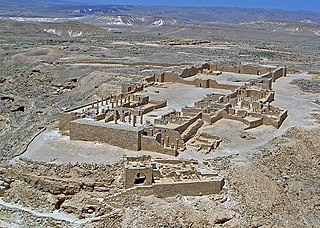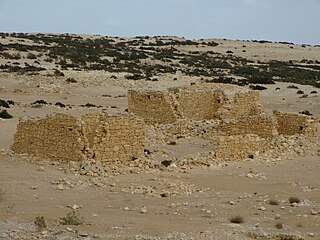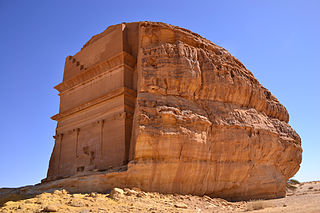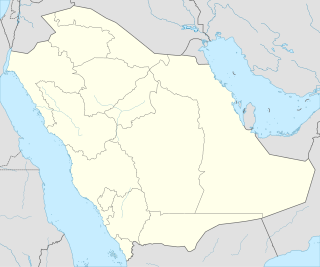 W
WNabatean architecture refers to the building traditions of the Nabateans in Jordan. It includes the temple and tombs of Petra in the sandstone cliffs of Jordan’s Negev desert. The style appears a mix of Mesopotamian and Hellenistic (Greek) influences.
 W
WAd Deir, also spelled ad-Dayr and el-Deir, is a monumental building carved out of rock in the ancient Jordanian city of Petra. The Deir was probably carved out of the rock in the mid-first century CE.
 W
WAl-Khazneh is one of the most elaborate temples in Petra, a city of the Nabatean Kingdom inhabited by the Arabs in ancient times. As with most of the other buildings in this ancient town, including the Monastery, this structure was carved out of a sandstone rock face.
 W
WAvdat, also known as Abdah and Ovdat and Obodat, is a site of a ruined Nabataean city in the Negev desert in southern Israel. It was the most important city on the Incense Route after Petra, between the 1st century BCE and the 7th century CE. It was founded in the 3rd century BCE, and inhabited by Nabataeans, Romans, and Byzantines. Avdat was a seasonal camping ground for Nabataean caravans travelling along the early Petra–Gaza road in the 3rd – late 2nd century BCE. The city's original name was changed to Avdat in honor of Nabataean King Obodas I, who, according to tradition, was revered as a deity and was buried there.
 W
WBosra, also spelled Bostra, Busrana, Bozrah, Bozra and officially called Busra al-Sham, is a town in southern Syria, administratively belonging to the Daraa District of the Daraa Governorate and geographically part of the Hauran region.
 W
WThe so-called Great Temple at Petra is a grand monumental complex that lies south of the Colonnaded Street at Petra. It covers an area of ~7,560 m2. The complex was probably completed in the early first century CE, under the rule of Nabataean king Aretas IV, as suggested by architectural and sculptural details.
 W
WHaluza, also known as Al-Khalasa, Halasa, Chellous, Elusa, al-Khalasa and al-Khalūṣ (Arabic), was a city in the Negev near present-day Kibbutz Mash'abei Sadeh that was once part of the Nabataean Incense Route. It lay on the route from Gaza to Petra.
 W
WHegra, also known as Mada’in Salih, or Al-Ḥijr (ٱلْحِجْر) is an archaeological site located in the area of Al-'Ula within Al Madinah Region in the Hejaz, Saudi Arabia. A majority of the remains date from the Nabatean kingdom. The site constitutes the kingdom's southernmost and largest settlement after Petra, its capital. Traces of Lihyanite and Roman occupation before and after the Nabatean rule, respectively, can also be found.
 W
WKhirbet et-Tannur is an ancient Nabataean temple situated on top of Jebel Tannur, in today's Jordan. Based on the cults statues iconography, whether the temple was dedicated to the fertility goddess Atargatis and Zeus-Hadad, or perhaps other gods of their own in that form is not yet certain. The only inscription which mentioned a deity was in reference to the Edomite god Qos, who was the equivalent of the Arab god Quzah, the god of the sky.
 W
WLeuke Kome was a Nabataean port city located on the Incense Route. It may have been in the vicinity of location currently called "Wadi Ainounah".
 W
WLittle Petra, also known as Siq al-Barid is an archaeological site located north of Petra and the town of Wadi Musa in the Ma'an Governorate of Jordan. Like Petra, it is a Nabataean site, with buildings carved into the walls of the sandstone canyons. As its name suggests, it is much smaller, consisting of three wider open areas connected by a 450-metre (1,480 ft) canyon. It is part of the Petra Archeological Park, though accessed separately, and included in Petra's inscription as a UNESCO World Heritage Site. It is often visited by tourists in conjunction with Petra itself, since it is free and usually less crowded.
 W
WMampsis is the Nabataean city of Mamshit or Memphis. The Arabic name is Kurnub, the name is a drink made from milk, honey and dates. In the Nabataean period, Mampsis was an important station on Incense Road, running from the Idumean Mountains, through the Arabah and Ma'ale Akrabim, and on to Beer-Sheva or to Hebron and Jerusalem. The city covers 10 acres (40,000 m2) and is the smallest but best restored city in the Negev Desert. The once-luxurious houses feature unusual architecture not found in any other Nabataean city.
 W
WNitzana is an ancient Nabataean city located in the southwest Negev desert in Israel close to the Egyptian border. It may have been a camel caravan station on the eastern branch of the ancient Incense Route, serving pilgrims and merchants travelling to Sinai or central Egypt. The Nabataean towns of the Negev were typically founded around the first century BC, conquered by Romans two centuries later, who garrisoned the site, and inhabited by Byzantine Christians from at latest the fourth century until the invasion and the Muslim conquest of Syria in the seventh century. Relatively few stones remain on the site because most were recycled into buildings in Gaza in the early 20th century.
 W
WPetra, originally known to its inhabitants in as Raqmu or Raqēmō (𐢚𐢛𐢓𐢈), is a historic and archaeological city in southern Jordan. Petra lies around Jabal Al-Madbah in a basin surrounded by mountains which form the eastern flank of the Arabah valley that runs from the Dead Sea to the Gulf of Aqaba. The area around Petra has been inhabited from as early as 7000 BC, and the Nabataeans might have settled in what would become the capital city of their kingdom, as early as the 4th century BC. However, archaeological work has only discovered evidence of Nabataean presence dating back to the second century BC, by which time Petra had become their capital. The Nabataeans were nomadic Arabs who invested in Petra's proximity to the trade routes by establishing it as a major regional trading hub.
 W
WThe Qasr al-Bint is a religious temple in the Nabataean city of Petra. It faces the Wadi Musa and is located to the northwest of the Great Temple and to the southwest of the Temple of the Winged Lions. One of the best preserved of the ancient structures surviving in Petra today, it stands near the monumental gate and was a key focal point on the colonnaded street, as well as a focus of religious worship.
 W
WShivta, originally Sobata or Subeita, is an ancient city in the Negev Desert of Israel located 43 kilometers southwest of Beersheba. Shivta was declared a UNESCO World Heritage Site in June 2005, as part of the Incense Route and the Desert Cities of the Negev, together with Haluza/Elusa, Avdat and Mamshit/Mampsis.
 W
WThe Temple of the Winged Lions is a large Nabatean temple complex located in Petra, Jordan, and dated to the reign of King Aretas IV. The temple is located in Petra’s so-called Sacred Quarter, an area situated at the end of Petra’s main Colonnaded Street consisting of two majestic temples, the Qasr al-Bint and, opposite, the Temple of the Winged Lions on the northern bank of Wadi Musa.